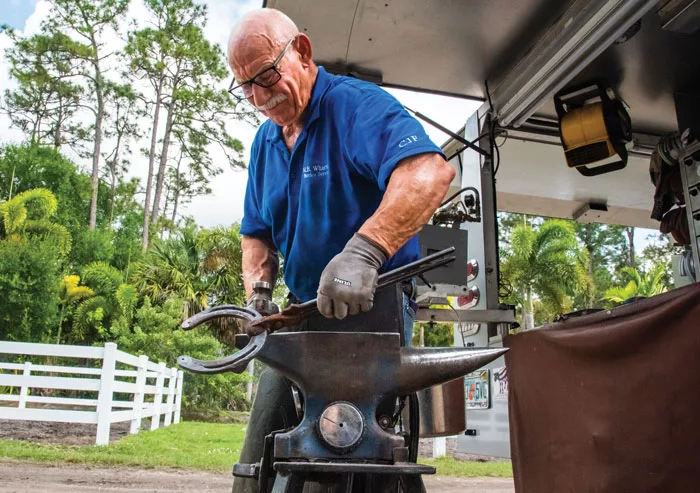American Farriers Journal
American Farriers Journal is the “hands-on” magazine for professional farriers, equine veterinarians and horse care product and service buyers.

What draws farriers to their calling? For many, simply the love of horses. There also is the draw of a career that lets you determine your path — something many professions forbid. And after acquiring enough knowledge and ability, the satisfaction that comes from having helped a horse improve.
Whatever the reasons, they also sustain a farrier to persevere through a career that will present frustrations and humbling lessons. All of these and others have fueled Mike Wharton through his 50-year career. In his mind, Wharton is entering a retirement phase — but not in the traditional sense of leaving the workforce. The Wellington, Fla., farrier says 2022 is his last show season, but he doesn’t want to permanently hang up his apron. Instead, he will maintain a couple of accounts and become very selective on which particular horses he’ll work with. Eventually, his “retirement” will likely be 2 days a week being under horses.
Wharton credits his wife Kay for her support and help in his career. Through planning, they are set up well financially, so an uncertain future isn’t the motivator preventing his full retirement. Instead, he still loves the challenge of keeping sport horses in the show ring. After deciding to step back, Wharton has begun notifying clients of his decision — and whether he’ll remain their farrier.